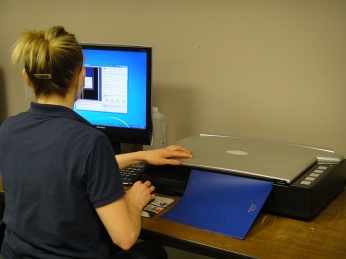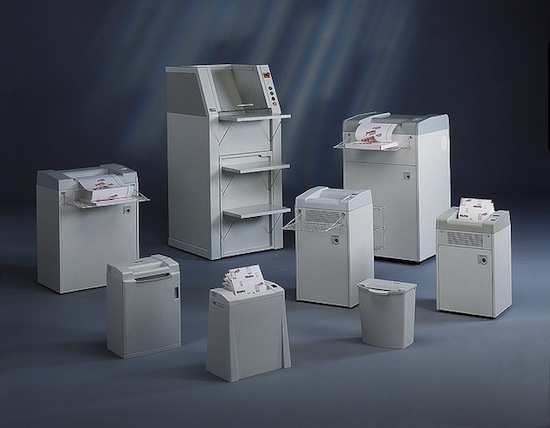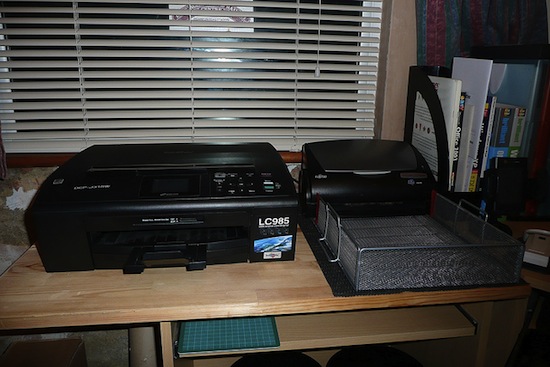Shredders and Scanners: two devices that can be found in almost every office. Shredders are instruments of destruction within the office space. They are used to eradicate those documents that are of no use or hold information that should not fall in the wrong hands. Scanners, on the other hand, are instruments of protection. They are all about safeguarding data and information by making digital copies of them. Scanners and shredders if used together they can create a more effective work space with less paper. In previous articles I have spoken in detail about shredders. Today, I am going to talk a bit about scanners; those strange devices that complement shredders and can make our office lives simpler, if used in a correct balance.
I remember the first time I saw a scanning device. It was sometime around 1998, a period that computers were becoming more and more central to the functioning of businesses and organizations everywhere in the western world. The internet was growing but nevertheless all was still pretty new especially to those many of us – just like me – who worked on small businesses.
The “scanner” had been around for quite a while but became popular during the late 90’s. At first glance it seemed like an object that didn’t “belong”. It was flat; it seemed almost empty with no obvious reason for existing. I remember at the office that day, they told us that if we put a photo into it or any flat paper, it could copy it into a computer. At the beginning, this seemed difficult to grasp. Surely, I knew that I could print a file from my computer but how could it be possible to do the opposite? And why should I want to do something like that? It just didn’t make a lot of sense at that time. Why should you keep a digital copy of a file that you already have in paper?
Years have passed since those days of ignorance and naivety. Nowadays scanning devices are everywhere. They can be found at newspapers and hospitals, or police headquarters. Architects and photographers use them. Scanners are everywhere. They have evolved offering high resolution output at a low price. They have become smaller in size and thinner. Or have become part of other devices such as printing machines. With advances in hardware design and storage capabilities of computers, they have become an essential tool for any IT management strategy. Now, it all makes sense.
But let’s start with the most basic of questions: what is scanning?
Scanning is the process by which paper documents are copied and saved as digital images. And why is it important? For one reason, if done according to specific requirements, the electronic record can legally take the place of the paper document, which can then be destroyed. http://f2.washington.edu/fm/recmgt/scanning
And this can help save time, space, money. The more documents we digitize the faster we can do our job. And in a world where information needs to be available anytime, anywhere, it is crucial to capture documents digitally.
We scan for see three basic reasons:
– For archiving so that we can discard paper
– For populating information repositories so that we can have easier access to specific data when we need them
– At the start of a business process so as to ensure that more of the processes will be done digitally
The fact is that the more we scan documents the more it becomes less about archiving and more about creating an end to end workflow which can and will:
– Reduce costs from such expenses that require extensive time consuming processes like searching, faxing, making copies. In the long term, it will also save money from buying equipment, from repair or maintenance.
– Make access to critical information easier and faster. The more an organization grows the more paperwork is created and access to the information becomes more difficult. If we want to be efficient and competitive it is essential to be able to access records fast. Especially in specific professions like those involved with the healthcare and medical industry, access to information in time – when, for example, a patient is in an emergency situation – can be crucial. Scanning documents makes critical information easily accessible.
– Maximize office space. Every inch with less paper is an inch of free space. Less paper means less paper related machines, less shelves for storing paper, more space for a more happy and productive working environment for you and your employees.
– Improve reputation. Walking into an office where technology has more or less replaced paper or other more traditional processes gives the impression of a more advanced, more efficient, more forward thinking business. This positive first impression can lead to a better cooperation between customers and a business. However this is not just an impression. A business will function more efficiently and this will increase reputation and create a competitive advantage.
All in all, scanning can make a difference for you and your business.
However, scanning all of your documents is rarely a good decision. Therefore, before you start scanning documents we need to make some choices:
1) Learn about retention requirements
Different types of documents must be stored for different periods of time depending on what type of information they hold. When we know what are the requirements then we can decide which documents we want to scan.
2) Scan only the necessary
Following my previous point, it goes without saying that it doesn’t make a lot of sense to scan documents than need to be stored for only one more year before they can be shredded. Therefore use your time and money wisely to find those documents that you use more often than others or that must be stored for the longest period of time.
3) Decide what to do with documents after scanning
A third basic point I wish to make is that after scanning a crucial decision has to be taken regarding what we will do with the paper documents we just scanned. Should we keep them? Should we shred them? Check with authorities about the length of time that you must keep documents after you have captured them digitally. In many documents the period varies from 1 to 3 months but there are cases that you must keep them for much longer or even indefinite. Nevertheless, be sure before you shred any documents.
Remember, the issue is not to create a paperless office but an office with less paper, a more efficient business. Too much scanning can be as bad as too much shredding. The issue here is to be able to access those documents quickly, efficiently, in accordance with regulations. Document scanning and digitizing can create a competitive advantage if done correctly for any business, small or big. And if you think this process is too time consuming or too complex there are professionals out there who have proven their expertise and can do the job for you: http://www.ironmountain.co.uk/services/scanning/
In any case, it is in the interest of any business or organization to start the scanning process. It reduces costs, it creates space, it makes work more efficient; it makes access to information easier. It makes for a better organized business. And a healthy balanced organization is in the interest of all, employers, employees and customers.


